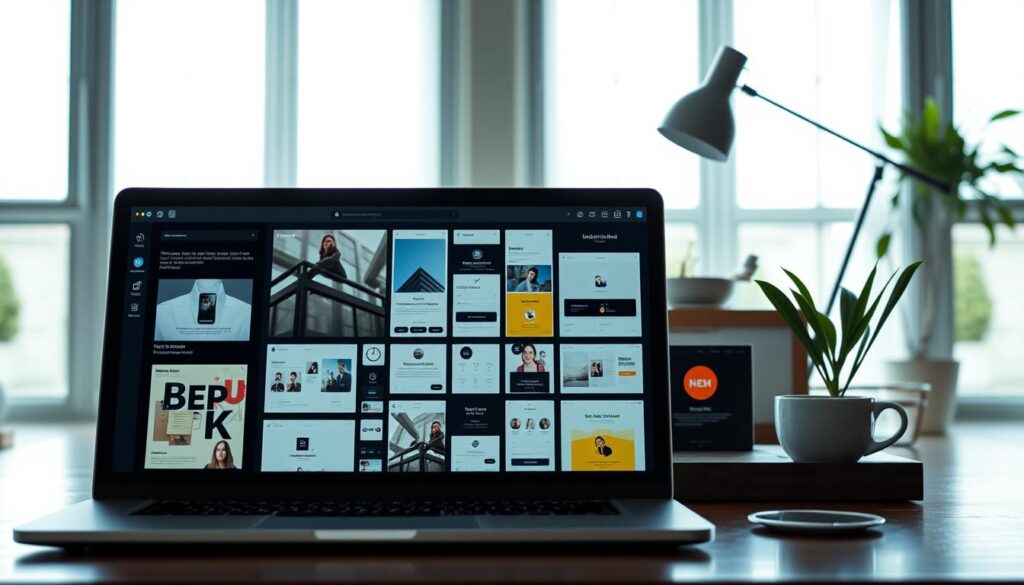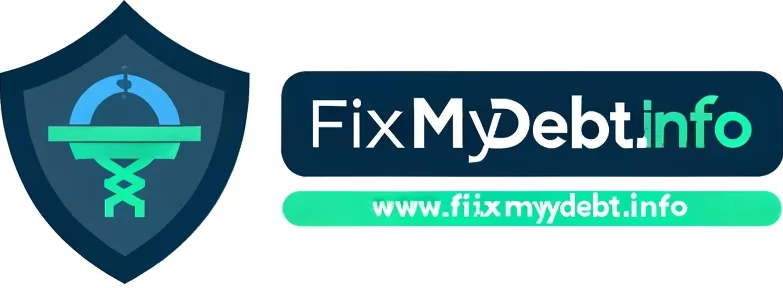Did you know that 63% of companies now offer remote positions, making it easier than ever to find opportunities in creative fields1? The rise of digital work has opened doors for aspiring designers to work from anywhere, whether you’re in San Francisco or Manila. Platforms like Dribbble post dozens of new remote opportunities daily, showcasing roles like Product Designer, UI/UX Designer, and Art Director2.
Remote work isn’t just a trend—it’s a lifestyle shift. By eliminating commuting, employees can save hundreds of dollars weekly while gaining flexibility1. This guide will walk you through the steps to land your first remote role, from crafting a standout portfolio to networking effectively. Whether you’re a seasoned professional or just starting, the global demand for creative talent is on your side.
Ready to take control of your career? Let’s dive into actionable strategies that can help you achieve financial independence while doing what you love. For more tips on managing your finances, check out our guide on debt consolidation and credit counseling.
Understanding the Landscape of Remote Graphic Design Work
The remote creative industry is evolving faster than ever, offering new opportunities for professionals worldwide. Platforms like Dribbble showcase hundreds of remote roles daily, from UI/UX specialists to digital product creators3. Staying updated on these trends is crucial for anyone looking to thrive in this dynamic field.
Trends in Remote Work for Designers
The rise of remote work has reshaped how creative professionals approach their careers. Digital product design is growing rapidly, with companies seeking talent to build user-friendly interfaces and engaging experiences4. This shift has also led to a blending of traditional creative work with digital tools and marketing strategies.
Freelance opportunities are on the rise, allowing professionals to work on diverse projects without being tied to a single employer. Women, in particular, are benefiting from this flexibility, balancing their careers with personal commitments3.
Evolving Roles in Digital Design
As companies adopt remote work policies, roles are becoming more versatile. Creative professionals now need to integrate art, technology, and marketing to meet modern demands. This evolution has made skills like front-end development and digital storytelling indispensable.
| Trend | Impact |
|---|---|
| Digital Product Design | High demand for UI/UX specialists |
| Freelance Opportunities | Increased flexibility and project diversity |
| Blended Skills | Art, tech, and marketing integration |
Organizations like Ladies Who Design are supporting women in this field, addressing underrepresentation and fostering inclusivity3. By staying adaptable and continuously learning, creative professionals can thrive in this ever-changing landscape.
Exploring Graphic Design Jobs Opportunities
The demand for creative professionals in remote roles has skyrocketed in recent years. Platforms like Dribbble showcase hundreds of opportunities, from UI/UX specialists to digital product creators5. This shift has made it easier than ever to find positions that align with your skills and career goals.
What to Expect from Remote Positions
Remote work offers flexibility, allowing you to manage your schedule while collaborating with teams worldwide. Creative independence is a key benefit, but it also requires strong communication skills to stay connected6. Challenges like time zone differences and self-discipline are common, but they can be managed with the right tools and mindset.
Freelancing is a popular path, providing opportunities to work on diverse projects and build a versatile portfolio. Over 270,000 creative professionals are employed remotely in the U.S., with roles ranging from UI designers to motion graphics specialists6.
Types of Companies Hiring Remotely
From tech startups to established agencies, companies across industries are embracing remote work. Startups often offer innovative cultures and rapid growth opportunities, while larger organizations provide stability and structured workflows5.
For example, Dribbble’s job board lists roles in industries like e-commerce, entertainment, and education. These positions often require skills in web development, digital storytelling, and user-centered design6.
Aligning your career goals with company expectations is crucial. Whether you’re drawn to a startup’s dynamic environment or an agency’s established reputation, understanding the culture and values of potential employers will help you thrive in the remote creative industry7.
Leveraging Online Design Communities
Online communities have become a cornerstone for creative professionals seeking remote opportunities. Platforms like Dribbble are vibrant hubs where professionals share their work and scout for new roles8. These spaces are not just for showcasing talent but also for building connections that can lead to meaningful collaborations.
Dribbble and Other Design Hubs
Dribbble stands out as a go-to platform for creatives. It’s a place where you can share your portfolio, get feedback, and discover job openings. Over 270,000 creative professionals in the U.S. use platforms like this to find remote roles9.
Here’s how to make the most of these hubs:
- Showcase your best work: Regularly update your profile with recent projects to stay relevant.
- Engage with the community: Comment on others’ work and participate in discussions to build relationships.
- Use analytics: Track engagement to understand what resonates with your audience8.
Finding Niche Job Boards
Niche job boards are another excellent resource for finding remote opportunities. These platforms cater specifically to creative roles, making it easier to find positions that match your skills8.
Tips for using niche boards effectively:
- Be consistent: Check these boards regularly to stay updated on new openings.
- Tailor your applications: Customize your resume and cover letter for each role to stand out.
- Network with insiders: Connect with industry professionals who share opportunities on these platforms9.
By leveraging these resources, you can enhance your visibility and increase your chances of landing your dream remote role. Remember, the key is to stay active and engaged in these communities over time.
Building an Impressive Design Portfolio
Your portfolio is your digital handshake in the world of remote creative work. It’s the first impression potential employers or clients will have of your skills and style. A strong portfolio not only showcases your best work but also establishes your credibility in the industry10.

Showcasing Your Best Work
When building your portfolio, focus on quality over quantity. Include three to five standout projects that highlight your versatility and expertise11. Whether it’s a web design project or a branding campaign, each piece should tell a story about your process and results.
High-resolution images are essential to maintain professionalism and showcase the details of your work11. If you have year experience working with major brands, like Apple or Nike, make sure to feature those prominently10.
Creating a Cohesive Digital Brand
Your portfolio should reflect your personal brand. Use consistent colors, fonts, and layouts to create a cohesive look. Platforms like WordPress or Squarespace can help you build a professional website with ease11.
Effective navigation and user experience (UX) are critical. A well-organized portfolio makes it easy for visitors to explore your work and understand your skills10. Include project explanations to encourage engagement and showcase your thought process.
Updating your portfolio regularly is key. As your body of work grows, curate it to reflect your current expertise and style. This ensures your portfolio remains relevant and impactful10.
Optimizing Your Resume and Online Presence
Your resume and online presence are critical tools for landing remote creative roles. In a competitive market, these elements can make or break your chances of securing your dream position. Tailoring your resume and leveraging platforms like LinkedIn, Behance, and personal websites can help you stand out to recruiters and hiring managers12.
Tailoring Your Resume for Creative Roles
Customizing your resume is essential to highlight your relevant experience and skills. Start by aligning your resume with the job description, emphasizing keywords like customer engagement and lead generation12. If you have a degree graphic design, make sure it’s prominently featured in your education section.
Include a link to your online portfolio to showcase your work. Experts recommend using platforms like WordPress or Squarespace to create a professional portfolio website12. This not only demonstrates your skills but also provides a cohesive narrative of your career journey.
Using LinkedIn, Behance, and Personal Websites
LinkedIn is the most popular professional network, and recruiters often check profiles before reviewing resumes12. Ensure your profile is complete, with a clear headline, summary, and links to your portfolio. Use keywords like customer experience and lead design to optimize your profile for search.
Behance is another excellent platform for showcasing your work. Regularly update your profile with new projects to attract recruiters. Personal websites offer complete control over your branding and can include testimonials, case studies, and detailed project explanations12.
| Platform | Key Features |
|---|---|
| Professional networking, profile optimization | |
| Behance | Portfolio showcase, project updates |
| Personal Website | Full branding control, detailed case studies |
Aligning your online presence with your career goals is crucial. Regularly audit your social media accounts to ensure they reflect your professional image. Tools like Google Alerts can help you manage your online reputation12.
By tailoring your resume and optimizing your online presence, you can increase your chances of landing remote creative roles. Stay consistent, update regularly, and always showcase your best work.
Navigating Freelance and Contract Opportunities
Freelance and contract work has become a gateway for many professionals to enter the creative industry. Whether you’re just starting or looking to diversify your experience, these opportunities offer flexibility and a chance to build a robust portfolio. Many professionals find that short-term gigs can evolve into long-term relationships or even full-time roles13.
One of the key benefits of contract work is the ability to work on diverse projects. This not only enhances your skills but also makes your portfolio more appealing to future clients or employers. Platforms like CollabWORK provide a space to showcase your work and connect with potential clients, reflecting the growing reliance on digital platforms for job acquisition13.
Finding Short-Term and Contract Gigs
Starting with contract work can be an excellent way to gain industry experience. Many professionals with a bachelor degree graphic or related field find that these roles allow them to apply their skills in real-world scenarios. Over time, these gigs can lead to more stable opportunities14.
Here are some strategies to find reputable freelance agencies and platforms:
- Leverage niche job boards: Platforms like Dribbble and Behance cater specifically to creative roles, making it easier to find relevant opportunities.
- Network actively: Engaging with design communities and attending industry events can open doors to new collaborations14.
- Tailor your proposals: Customize your applications to align with client needs, showcasing how your skills match their project requirements13.
Balancing multiple contracts can be challenging, but it’s a great way to build a lasting portfolio. Regularly updating your portfolio every 4-5 months ensures it reflects your evolving style and diverse projects14. This not only attracts new clients but also helps you negotiate higher pay.
“Freelancing is about more than just work—it’s about building relationships and continuously improving your craft.”
If you’re considering a bachelor degree in a creative field, remember that contract work can complement your education by providing hands-on experience. The creative industry is dynamic, and staying adaptable is key to thriving in this ever-changing landscape15.
Using Niche Job Boards and Staffing Agencies
Navigating the job market can be overwhelming, but niche job boards and staffing agencies simplify the process by connecting you with tailored opportunities. These platforms cater to specific industries, making it easier to find roles that align with your skills and career goals16.
Reviewing Design-Specific Agencies
When searching for roles in creative fields, agencies like Creative Circle, 24 Seven Talent, and Aquent are invaluable. These agencies specialize in placing professionals with a degree graphic or related qualifications, ensuring you’re matched with roles that suit your expertise16.
To evaluate these agencies, consider their client rosters and specialties. Look for agencies that work with top brands and have a proven track record in your desired field. This increases your chances of landing a role that aligns with your career aspirations17.
Comparing General Job Boards and Niche Platforms
While general job boards like Indeed and Craigslist offer a wide range of opportunities, niche platforms like Dribbble and The Muse focus specifically on creative roles. This targeted approach ensures you’re not sifting through irrelevant listings16.
Here’s why niche platforms stand out:
- Tailored opportunities: Find roles that match your skills and interests.
- Higher quality candidates: Employers on niche platforms are often more selective, leading to better matches17.
- Industry-specific resources: Access tools and advice tailored to your field.
Using these platforms can also help you build professional connections. Engaging with industry-specific communities opens doors to collaborations and mentorship opportunities16.
Whether you’re a fresh graduate or an experienced professional, leveraging niche job boards and staffing agencies can significantly enhance your job search. Focus on platforms that align with your goals, and don’t hesitate to explore multiple resources to maximize your chances of success.
Networking in the Design Community
Building meaningful connections in the creative field can open doors to opportunities you never imagined. Networking isn’t just about exchanging business cards—it’s about fostering relationships that can lead to job referrals, collaborations, and mentorship. Whether you’re a recent graduate or an experienced professional, engaging with the community is essential for growth18.

Joining AIGA Events and Local Meetups
Organizations like AIGA host events that bring together creative professionals from diverse backgrounds. These gatherings are perfect for meeting peers, learning about industry trends, and discovering new opportunities. Attending local meetups can also help you build a reputation and gain credibility in your field18.
Here’s how to make the most of these events:
- Be proactive: Introduce yourself to others and share your passion for your work.
- Follow up: After the event, connect with new contacts on LinkedIn or via email to maintain the relationship.
- Participate actively: Engage in discussions and offer insights to establish yourself as a thought leader19.
Leveraging Alumni and Industry Connections
Your alumni network is a goldmine of resources. Many graduates are willing to offer guidance, share job leads, or even collaborate on projects. Reaching out to alumni in your field can provide valuable insights and open doors to new opportunities18.
Social media platforms like LinkedIn are also powerful tools for networking. Regularly update your profile, share your work, and engage with industry leaders to stay visible. Here are some strategies to grow your professional circle:
- Join online communities: Platforms like Dribbble and Behance allow you to connect with peers and showcase your skills.
- Attend virtual events: Webinars and online conferences are great for meeting professionals from around the world19.
- Be consistent: Regularly engage with your network to build genuine relationships over time18.
“Networking is about building bridges, not just collecting contacts. Focus on creating meaningful connections that last.”
By actively participating in events, leveraging alumni networks, and using social media strategically, you can expand your professional circle and unlock new opportunities. Remember, networking is a long-term investment that pays off when you nurture those relationships consistently.
Cold Calling and Outreach Strategies
Taking the initiative to reach out directly can be a game-changer for landing remote opportunities. Many talented professionals aren’t actively searching for roles or showcasing their work on popular platforms, making cold outreach a powerful tool to uncover hidden talent20.
Cold emails are 40 times more effective than social media for client outreach, with open rates ranging from 15–25%21. This method is cost-effective compared to traditional recruitment or paid advertising, making it ideal for professionals looking to break into the industry20.
Creating a Curated Client List
Start by identifying agencies or companies that align with your skills and interests. Tools like Hunter.io can help you find email addresses associated with specific organizations, streamlining your outreach process21. Focus on building a list of 100 potential contacts to maximize your chances of success21.
Personalization is key. Reference specific projects or achievements from their portfolio to show genuine interest and align your skills with their needs20. A well-crafted email can lead to long-term professional relationships, even if they’re not immediately hiring20.
Mastering the Art of Personalization
Generic emails often end up in spam folders, so tailor your message to each recipient. Use their name and mention how your expertise can benefit their team. For example, if you specialize in fine art, highlight how your unique style can enhance their projects20.
Keep your email concise—3-4 short paragraphs with no more than 2-3 sentences each. This respects their time while delivering your message effectively20.
Persistence Without Aggressiveness
Follow up 2-3 business days after your initial email if you don’t receive a response. This increases your chances of getting noticed without being intrusive21. Limit follow-ups to 2-3 attempts to maintain professionalism20.
Track key metrics like open rates, click-through rates, and response rates to refine your approach. Tools like Gmass can help you monitor these metrics and optimize your campaigns21.
“Cold outreach isn’t just about finding opportunities—it’s about building bridges and creating lasting connections.”
Real-Life Success Stories
Many professionals have landed remote roles through proactive outreach. For instance, one specialist secured a contract with a top agency after sending personalized emails to 50 potential clients22. Another designer built a thriving freelance career by consistently following up with leads and showcasing their fine art expertise20.
By taking the first step and staying persistent, you can open doors to opportunities that might otherwise remain hidden. Whether you’re reaching out to a team or an individual, the key is to be genuine, professional, and proactive.
Developing New Skills to Boost Your Candidacy
Expanding your skill set is one of the most effective ways to stand out in the competitive creative field. As a design lead, I’ve seen firsthand how learning complementary skills like front-end development can enhance your work and open new opportunities. With plus year experience, you’ll find that these additional skills not only make you more versatile but also more valuable to employers23.

Exploring Front-End Development Basics
Understanding front-end development can significantly improve your ability to communicate with developers and ensure your designs translate seamlessly into functional websites. This skill is particularly valuable in roles like design lead, where collaboration across teams is essential24.
Here are some resources to get started:
- Online courses: Platforms like Codecademy and freeCodeCamp offer beginner-friendly tutorials.
- Practice projects: Build simple websites to apply what you’ve learned.
- Community forums: Engage with developers on platforms like Stack Overflow to deepen your understanding23.
Upskilling in Digital Product Design
Digital product design is a rapidly growing field, and mastering it can set you apart in the job market. With plus year experience, you’ll be better equipped to handle complex projects and lead teams effectively25.
Here’s how to integrate these skills into your workflow:
- Take specialized courses: Platforms like Coursera and Udemy offer in-depth training.
- Analyze industry trends: Stay updated on tools and techniques that are in demand.
- Seek feedback: Regularly share your work with peers to refine your skills24.
“Continuous learning is the key to staying relevant in the ever-evolving creative industry.”
By investing time in developing new skills, you’ll not only enhance your portfolio but also position yourself as a top candidate for remote roles. Whether you’re a seasoned professional or just starting, these strategies can help you achieve long-term success.
Tips for New Designers with Limited Experience
Starting a career in the creative field can feel overwhelming, but every professional begins somewhere. The key is to take advantage of every opportunity, even if it’s unpaid or low-paying. These early experiences are crucial for building your skills and gaining real-world experience graphic design professionals value26.
Starting with Internships and Freelance Gigs
Internships and freelance gigs are excellent ways to gain hands-on year experience graphic professionals look for. Many successful designers started with small projects that eventually led to bigger opportunities27. Don’t shy away from unpaid internships if they offer valuable learning experiences and networking opportunities.
Here’s how to make the most of these early roles:
- Be proactive: Seek out projects that challenge you and help you grow.
- Network actively: Connect with mentors and peers who can guide you.
- Document your work: Every project, no matter how small, is a service to your future portfolio26.
Learning Through Practice and Feedback
Practice is essential for refining your craft. Take on as many projects as you can, even if they’re volunteer work or for faux clients. This not only builds your portfolio but also helps you develop a unique style27.
Feedback is equally important. Share your work with peers and mentors to gain insights that can improve your skills. Constructive criticism is a valuable service that accelerates your growth26.
“Every project is a stepping stone. Embrace the process, and you’ll see how far you’ve come.”
By focusing on continuous learning and seeking feedback, you’ll build a solid foundation for your career. Remember, every year experience graphic professionals gain adds to their expertise and credibility27.
Understanding the Remote Work Infrastructure in the U.S.
Remote work has become a cornerstone of the modern U.S. workforce, reshaping how professionals collaborate across distances. With approximately 30% of the workforce engaged in remote work, the need for effective infrastructure is more critical than ever28. This shift has brought both challenges and opportunities, particularly in managing time zones and leveraging technology for seamless collaboration.

Managing Time Zones and Remote Collaboration
One of the biggest challenges in remote work is coordinating across different time zones. Teams spread across the U.S. often face delays in communication, which can hinder project timelines. However, with the right strategies, these challenges can be turned into advantages.
Here are some effective ways to manage time zones:
- Set overlapping hours: Identify a few hours each day when all team members are available for meetings and collaboration.
- Use asynchronous tools: Platforms like Slack and Trello allow team members to contribute at their own pace, reducing the need for real-time communication.
- Create a shared calendar: This helps everyone stay informed about deadlines and availability29.
The Role of Modern Communication Tools
Technology plays a crucial role in bridging the gap between remote teams. Tools like Zoom, Microsoft Teams, and virtual desktops have become essential for maintaining productivity and connectivity. These tools not only facilitate communication but also ensure that everyone has access to the same resources, regardless of location28.
For example, virtual desktops allow remote workers to securely access their work environment from any device, enhancing flexibility and efficiency. This is particularly beneficial for roles that require access to specialized software or large datasets29.
Synchronizing Project Timelines
Effective project management is key to success in remote work. Teams must align their efforts to ensure that tasks are completed on time and to a high standard. This requires clear communication and a shared understanding of priorities.
Best practices for synchronizing timelines include:
- Regular check-ins: Schedule weekly or bi-weekly meetings to review progress and address any issues.
- Detailed task assignments: Clearly define responsibilities and deadlines to avoid confusion.
- Transparent documentation: Use project management tools to keep track of tasks, updates, and feedback28.
Setting Up a Productive Remote Workstation
Creating a dedicated workspace is essential for maintaining productivity and focus. A well-organized workstation can help you stay on track and minimize distractions.
Here are some tips for setting up your remote workspace:
- Invest in ergonomic furniture: A comfortable chair and desk can prevent fatigue and improve focus.
- Ensure reliable internet access: A stable connection is crucial for seamless communication and collaboration.
- Use dual monitors: This can enhance efficiency, especially for tasks that require multitasking29.
By optimizing your workspace, you can create an environment that supports both productivity and well-being. This is particularly important for roles that require long hours in front of a computer, such as journalism plus year professionals28.
“Remote work isn’t just about where you work—it’s about how you work. By leveraging technology and effective strategies, you can overcome logistical challenges and thrive in a remote environment.”
Integrating Search Intent into Your Job Hunt
Understanding search intent is crucial for tailoring your job hunt to meet employer demands. By aligning your applications with what recruiters are looking for, you can significantly increase your chances of landing your dream role. This approach not only makes your application more relevant but also helps you stand out in a competitive market30.
Emphasizing Transactional Keywords
Transactional keywords, like “hire a branding specialist,” indicate a recruiter’s intent to fill a specific position. Incorporating these keywords into your resume and online profiles can make your application more discoverable31. For example, if you’re applying for a role in digital marketing, use phrases like “SEO optimization” or “content strategy” to align with job descriptions.
Here’s how to optimize your materials:
- Research job postings: Identify common transactional keywords in your field.
- Tailor your resume: Use these keywords naturally in your skills and experience sections.
- Update your LinkedIn profile: Ensure your headline and summary reflect these terms30.
Optimizing Applications for the U.S. Market
The U.S. job market has specific expectations for resumes and online profiles. Highlighting your experience graphic design or related fields is essential, but so is understanding cultural nuances. For instance, U.S. recruiters value concise, results-driven resumes that showcase measurable achievements31.
To align with U.S. market demands:
- Focus on outcomes: Use metrics to demonstrate your impact in previous roles.
- Keep it concise: Limit your resume to one or two pages.
- Leverage local networks: Connect with professionals in your industry to gain insights30.
“Search intent isn’t just about keywords—it’s about understanding what employers need and positioning yourself as the solution.”
By integrating search intent into your job hunt, you can create applications that resonate with recruiters. Whether you’re refining your resume or optimizing your online presence, these strategies will help you navigate the U.S. job market with confidence.
Marketing Yourself as a Graphic Designer
In today’s competitive creative landscape, standing out requires more than just talent—it demands a strategic approach to self-promotion. With over 85% of professionals believing a strong portfolio is essential, your personal brand becomes your most powerful tool32. Here’s how to craft a compelling narrative, build an engaged audience, and leverage your unique value to secure opportunities.

Crafting a Personal Brand Story
Your personal brand is more than a logo or tagline—it’s the story that defines your journey and expertise. Start by identifying what makes you unique. Are you a journalism plus creative who blends storytelling with visuals? Or perhaps you’ve gained plus year experience in digital product design? Highlight these elements to create a narrative that resonates with your audience33.
Consistency is key. Use the same tone, colors, and messaging across your website, social media, and portfolio. This creates a cohesive identity that clients and employers will remember. For example, if your style is minimalist, ensure every piece of content reflects that aesthetic32.
Creating a Compelling Online Pitch
Your online pitch is your digital handshake. It should clearly communicate who you are, what you do, and why you’re the best choice. Start with a strong headline that captures attention, like “Transforming Ideas into Visual Masterpieces.” Follow this with a concise bio that highlights your plus year experience and key achievements33.
Include a call-to-action that encourages visitors to connect with you. Whether it’s scheduling a consultation or viewing your portfolio, make it easy for them to take the next step. Remember, 70% of clients prefer designers who showcase their work on platforms like Instagram and LinkedIn32.
Building an Engaged Email List
An email list is a direct line to your audience, allowing you to share updates, insights, and opportunities. Start by offering value upfront, such as a free design template or a guide to monetizing creative work. This encourages sign-ups and builds trust34.
Once you’ve built your list, maintain engagement with regular updates. Share portfolio highlights, industry news, or tips on improving application materials. The 80/20 rule suggests that 80% of your content should be helpful, while 20% can be promotional34.
| Strategy | Impact |
|---|---|
| Personal Branding | Builds trust and recognition |
| Online Pitch | Captures attention and communicates value |
| Email List | Direct engagement and lead nurturing |
“Your personal brand is your promise to the world. Make it authentic, consistent, and unforgettable.”
By focusing on these strategies, you’ll not only attract clients but also position yourself as a thought leader in your field. For more tips on self-promotion, check out this expert guide.
Overcoming Industry Barriers and Competition
Breaking into the creative field often feels like navigating a maze of challenges, but with the right strategies, you can overcome them. The industry is highly competitive, with many professionals vying for the same opportunities, especially in areas like print media and digital branding35. However, persistence and continuous improvement can set you apart.
One of the most effective ways to stand out is by leveraging your strengths. Identify what makes you unique—whether it’s your knowledge of design trends or your ability to solve complex problems—and highlight these in your portfolio and applications36. Networking also plays a crucial role; building relationships with industry professionals can open doors to opportunities you might not find otherwise.
Gaining confidence is another key factor. Seek feedback from peers and mentors to refine your skills and improve your work. This not only helps you grow but also prepares you to handle the high expectations of clients and employers35.
Staying updated with evolving industry standards is essential. Regularly invest time in learning new tools and techniques. For example, mastering print design software or understanding the latest digital trends can give you a competitive edge36.
“Success in this field isn’t just about talent—it’s about adaptability and the willingness to learn continuously.”
By focusing on these strategies, you can navigate the challenges of the industry and carve out a successful career. Remember, every obstacle is an opportunity to grow and refine your knowledge.
Conclusion
Mastering the art of remote work in creative fields requires a blend of strategy and persistence. Throughout this guide, I’ve outlined actionable steps to help you succeed, from building a robust portfolio to leveraging online tools and networking effectively. These strategies are designed to enhance your understanding of the industry and sharpen your ability to stand out in a competitive market.
Key takeaways include the importance of continuous upskilling and personalized outreach. By integrating these practices into your routine, you’ll gain clarity and direction in your career path. Remember, 90% of information transmitted to the brain is visual, making your portfolio a critical tool for success37.
Take action today. Implement these tips to overcome industry barriers and position yourself for growth. With dedication and the right approach, you’ll unlock opportunities that align with your goals and aspirations.
FAQ
What are the key trends in remote work for designers?
How can I find niche job boards for design roles?
What should I include in my design portfolio?
How do I tailor my resume for remote design roles?
What are the benefits of joining online design communities?
How can I upskill to stand out in the design field?
What strategies work for cold outreach to potential clients?
How do I manage time zones in remote work?
What are the best ways to market myself as a designer?
How can I overcome competition in the design industry?
Source Links
- The 7 Best Remote Graphic Design Jobs Sites for Getting Design Clients in 2023 – https://millo.co/remote-graphic-design-jobs
- Remote Graphic Design Jobs – Browse 100s of Design Jobs – https://dribbble.com/remote-design-jobs
- The Remote Graphic Design Job Landscape: Opportunities and Challenges for Female Creatives – https://ladieswhodesign.medium.com/the-remote-graphic-design-job-landscape-opportunities-and-challenges-for-female-creatives-8b35b5b39f09
- How can Graphic Designers find remote work opportunities? – https://www.linkedin.com/advice/0/how-can-graphic-designers-find-remote-work-opportunities-4b2me
- What Can You Do with a Graphic Design Degree? Exploring Your Options – https://www.rasmussen.edu/degrees/design/blog/what-can-you-do-with-graphic-design-degree/
- 11 Careers You Can Pursue as a Graphic Designer – RMCAD – https://www.rmcad.edu/blog/11-careers-you-can-pursue-as-a-graphic-designer/
- Graphic Design Jobs: Career Paths to Explore – https://www.coursera.org/articles/graphic-design-jobs
- How to Leverage Social Media for Graphic Design Career | BSBI – https://www.berlinsbi.com/blog/how-to-leverage-social-media-for-your-graphic-design-career
- The Ultimate Guide: How To Leverage Social Media As A Designer By Blesson Varghese – https://www.designhill.com/design-blog/the-ultimate-guide-how-to-leverage-social-media-as-a-designer-by-blesson-varghese/
- The 23 Best Graphic Design Portfolios I’ve Ever Seen, & How to Start Your Own – https://blog.hubspot.com/marketing/graphic-design-portfolio
- Tips for Creating an Impressive Graphic Design Portfolio – https://www.coursera.org/articles/graphic-design-portfolios
- How can you align your resume with your online presence? – https://www.linkedin.com/advice/3/how-can-you-align-your-resume-online-presence-skills-resume-writing-7v5ge
- Navigating the Freelance Frontier: Finding, Securing, and Flourishing in the Gig Economy | CollabWORK – https://www.collabwork.com/post/navigating-the-freelance-frontier-finding-securing-and-flourishing-in-the-gig-economy
- Here’s how you can navigate the impact of freelance work on graphic designers’ career progression. – https://www.linkedin.com/advice/0/heres-how-you-can-navigate-impact-freelance-work-wfqvf
- A Freelance Graphic Design Career: Everything You Need to Know – Indy – https://weareindy.com/blog/a-freelance-graphic-design-career-everything-you-need-to-know
- Niceboard | 11 Examples of Niche Job Boards (updated 2024) – https://niceboard.co/learn/building/11-examples-of-niche-job-boards
- 14+ Niche Job Boards To Publish Your Job Posts – https://skima.ai/blog/industry-trends-and-insights/niche-job-boards
- How can you build a strong professional network in Graphic Design while still in school? – https://www.linkedin.com/advice/0/how-can-you-build-strong-professional-network-graphic-eowkf
- A Designer’s Guide to Networking – https://www.linkedin.com/pulse/designers-guide-networking-maureen-herben-qvywe
- Cold Email a Designer: 7 Pro Tips for Successful Outreach | Growleady – https://www.growleady.io/blog/how-do-you-cold-email-a-designer
- Cold emailing for creatives: Templates and resources to get started — NGD Blog – https://medium.com/@ngd.africa/cold-emailing-for-creatives-templates-and-resources-to-get-started-ngd-blog-d1777c23431d
- Cold Calling And Lead Generation For Designers – https://www.holabrief.com/blog/cold-calling-and-lead-generation-for-designers
- Career – 9 Soft Skills to Stand Out as a Designer – https://www.aela.io/en/blog/all/soft-skills-stand-out-designer-profession
- 10 graphic designer skills to level up in 2025 – https://www.kittl.com/article/graphic-designer-skills
- 12 Graphic Design Skills You Need To Be Hired [Infographic] – Venngage – https://venngage.com/blog/graphic-design-skills/
- 7 Tips for New Designers — Stewart Art & Design – https://stewartartdesign.com/blog/7-tips-for-new-designers
- Graphic Design with Zero Experience (11 Realistic Ideas You Can Implement Right Now) – Self-Made Designer – https://selfmadedesigner.com/graphic-design-no-experience/
- What is a Remote Job? Your Ultimate Guide to Remote Work – https://www.kumospace.com/blog/what-is-a-remote-job
- Remote Work Trends: Are They Here to Stay? – https://www.digi.com/blog/post/remote-work-trends
- Understanding Search Intent: How to Match User Queries – https://www.nobledesktop.com/learn/seo/understanding-search-intent-how-to-match-user-queries
- Search intent: a guide to implement it in your SEO strategy – https://www.oncrawl.com/technical-seo/search-intent-implement-seo-strategy/
- Marketing Yourself as a Graphic Designer – MOCK, the agency – https://mocktheagency.com/content/marketing-yourself-as-a-graphic-designer/
- Promote Yourself as a Graphic Designer Pt. 1 (Key Skills to Learn) | The Design Guy – https://www.callthedesignguy.com/post/promote-yourself-as-a-graphic-designer-pt-1-key-skills-to-learn
- Graphic Design Marketing For Beginners | Selfgood – https://selfgood.com/blog/small-business-marketing/graphic-design
- 15+ Graphic Design Challenges you must know with Solutions – https://www.visualbest.co/blogs/graphic-design-challenges/
- 6 Graphic Design Challenges to Overcome – https://logomakerr.ai/blog/6-graphic-design-challenges-to-overcome/
- Graphic Designers Do in 2025 – The Future of Graphic Design – https://awaydigitalteams.com/blog/what-does-a-graphic-designer-do/

